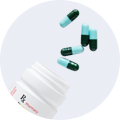When producing industrial chemical products, the following aspects need to be paid attention to:
Safety in Production
Strict Project Access and Review: Regions should establish clear safety access conditions for projects based on laws, regulations, standards, and local industrial realities. Projects that do not meet industrial policies or safety requirements should not be approved. A standardized and scientific review mechanism should be established for all stages of new dangerous chemical production projects.
Enhancing Inherent Safety Design: Adopt advanced safety technologies and risk management methods globally. Follow principles like reduction, substitution, mitigation, and simplification to improve inherent safety levels. Encourage continuous and automated production technologies to enhance safety reliability and reduce risks.
Standardizing Process Technology Management: Projects should use mature and reliable chemical processes, and the use of outdated processes prohibited by the state is strictly forbidden. Laboratory technologies that are being industrialized for the first time should undergo pilot tests, intermediate tests, and industrial trials before engineering design, following a hazard analysis of the process. For projects introducing foreign mature technologies for the first time in China, the technology provider should offer a statement on the operation of existing facilities abroad.
Strengthening Trial Production Safety Management: Before trial production, the construction unit should argue the trial production plan and submit it to the local municipal and county emergency management departments. During trial production, the unit should organize experts to confirm the trial production conditions and provide technical guidance. If any abnormal situation occurs during the trial run, the process should be terminated immediately, and the trial can only resume after the issues are rectified.
Improving Safety Facilities and Protection: Companies should establish safety management institutions or appoint full-time or part-time safety officers as required. Storage and usage sites of hazardous chemical products should be equipped with combustible and toxic gas detection alarm devices as per regulations. Lightning and static electricity protection devices, as well as explosion-proof electrical facilities, should be installed according to relevant standards. Companies should provide necessary personal protective equipment for workers involved in the use, storage, internal transportation, and loading/unloading of hazardous chemical products.
Strict Management of Special Operations: Companies should establish and implement special operation management systems for hazardous chemical operations, such as hot work, confined space entry, temporary electricity, high-altitude work, lifting, excavation, road closure, and blind flange removal/blocking. These operations should be subject to permit management, with clear procedures and control criteria, and the process should be supervised.
Environmental Protection Requirements
Controlling Emission of Characteristic Pollutants: Key-controlled enterprises should conduct mandatory clean production audits at least every two years and report the results and corrective measures to the relevant environmental protection authorities. Promote the eco-design of industrial products in line with green chemistry concepts to reduce and replace the use of high-risk key-controlled chemical products.
Strengthening Supervision of Storage and Transportation: Improve environmental supervision regulations for the storage and transportation of high-risk key-controlled chemical products in sudden environmental incidents. Establish an information notification and filing system with relevant departments for the transportation of hazardous chemical products, and perfect the networked monitoring system for the storage and transportation of hazardous chemical products. The transportation routes of hazardous chemical products should avoid environmentally sensitive areas such as drinking water sources and densely populated residential areas. Transportation vehicles should be equipped with emergency response materials and equipment matching the transported chemical products.
Quality Control
Quality Control in Procurement: Companies should purchase hazardous chemical products from units with production or business qualifications. When purchasing highly toxic chemical products, explosive precursors, or drug precursors, the relevant licensing requirements of the public security organs must be strictly followed. When purchasing hazardous chemical products, the company should obtain the corresponding Material Safety Data Sheet (MSDS) and safety labels from the supplier.
Storage and Transportation Management: Hazardous chemical products should be stored in dedicated warehouses, storage cabinets, stockyards, or tanks, in accordance with relevant regulations. When loading, unloading, and handling hazardous chemical products, the relevant regulations should be followed to ensure gentle handling, avoiding behaviors such as dropping, colliding, dragging, hitting, rolling, and overturning. Pipelines for flammable, explosive, and toxic hazardous chemical products should not pass through buildings, facilities, and storage areas unrelated to them.
Monitoring of Production Process: Companies should establish a comprehensive safety production responsibility system and formulate safety management regulations and operating procedures for the use, storage, internal transportation, and loading/unloading of hazardous chemical products. When there are changes in the management personnel, equipment, or process flow involving hazardous chemical products, the change management system should be strictly followed, and the risks generated by the changes should be identified, assessed, and controlled.




